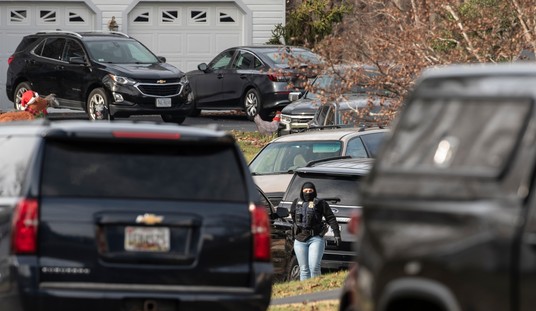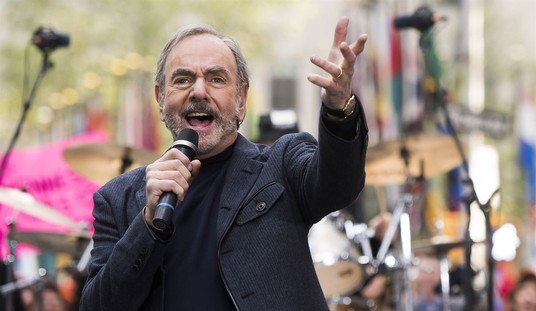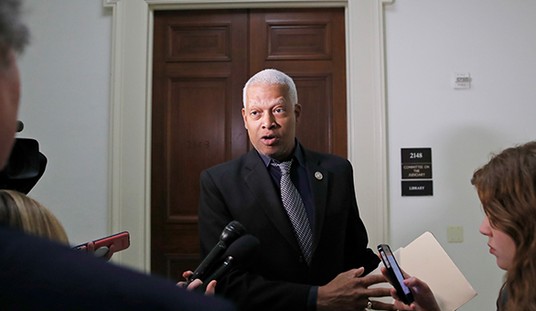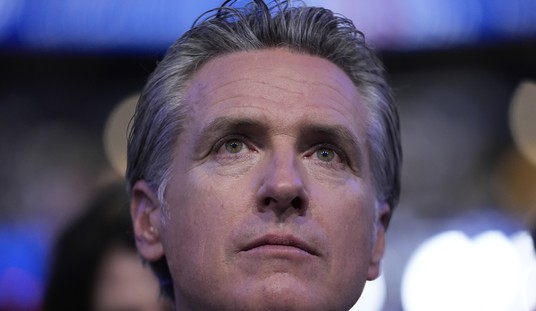
Today, the RedState Department of History notes one of the great occasions in the history of conservatism. On this date in 1925, Calvin Coolidge took the oath of office for a full term as the 30th President of the United States.
Coolidge became President suddenly in 1923 upon the death of Warren G. Harding. A former governor of Massachusetts, Coolidge’s philosophy of low taxes and limited government ushered in what came to be known as the “Roaring Twenties“.
While governor of the Bay State, Coolidge was thrust into the national spotlight by the Boston Police Strike of 1919. In that instance, the city’s policemen were unionized by the American Federation of Labor, and then walked off the job. Coolidge called in the National Guard after a predictable crime wave swept through the streets of the city.
When AFL boss Samuel Gompers protested, Coolidge replied with a telegram which put him on the national stage. He wrote:
“Your assertion that the Commissioner was wrong cannot justify the wrong of leaving the city unguarded. That furnished the opportunity; the criminal element furnished the action. There is no right to strike against the public safety by anyone, anywhere, any time. … I am equally determined to defend the sovereignty of Massachusetts and to maintain the authority and jurisdiction over her public officers where it has been placed by the Constitution and laws of her people.”
Coolidge also issued two famous vetoes as governor. The first was to veto a 50 percent pay raise for legislators; the second was to allow liquor sales in violation of the Eighteenth Amendment. “Opinions and instructions do not outmatch the Constitution,” Coolidge wrote. “Against it, they are void.”
As such, Coolidge was a popular choice to run with Harding in the election of 1920. “Silent Cal“, as he was then known, stayed in the background as vice-president but upon assuming the Presidency, stamped his own mark on government.
Coolidge signed the Revenue Act of 1924, which cut the top tax rate from 58 to 46 percent, and proposed reductions in federal spending which reduced the deficit and allowed the nation to retire one-quarter of the national debt during his term in office. He disdained regulation; one writer called his philosophy on regulation “thin to the point of invisibility.”
Coolidge then cut taxes twice more in 1926 and 1928, to the point where only the wealthiest two percent of Americans paid any income tax at all by the end of his term. In foreign affairs, Coolidge kept the United States out of the League of Nations, correctly noting years ahead of his time that large international bodies did not serve American national interests. He saw the election of 1920 as a national repudiation of Woodrow Wilson’s beliefs on the subject.
But perhaps most importantly, Coolidge understood federalism. Historian Robert Sobel, in his book Coolidge: An American Enigma, said of him:
“As Governor of Massachusetts, Coolidge supported wages and hours legislation, opposed child labor, imposed economic controls during World War I, favored safety measures in factories, and even worker representation on corporate boards. Did he support these measures while president? No, because in the 1920s, such matters were considered the responsibilities of state and local governments.”
Coolidge was also the only American President to be featured on a United States coin during his lifetime, in 1926. He also gave 520 news conferences – meeting with the media more than any American President before or since. Ronald Reagan placed a portrait of Coolidge in the Cabinet Room during his time as President. In his autobiography, Reagan wrote that:
He (Coolidge) wasn’t a man with flamboyant looks or style, but he got things done in a quiet way. He came into office after World War I facing a momentous war debt, but instead of raising taxes, he cut the tax rate and government revenues increased, permitting him to eliminate the wartime debt.”
Coolidge also understood that the power of the nation was based on the self-reliance of the individual. He himself said:
“They criticize me for harping on the obvious; if all the folks in the United States would do the few simple things they know they ought to do, most of our big problems would take care of themselves.”
Sadly, Coolidge did not live long after declining to run for President again in 1928. Just after the term of his successor, Herbert Hoover, had ended, Coolidge died suddenly in 1933.
However, he left behind a solid conservative legacy both of achievement and of philosophy — and established himself as one of the cornerstones of modern conservatism.
Happy Sunday and enjoy today’s open thread!













Join the conversation as a VIP Member